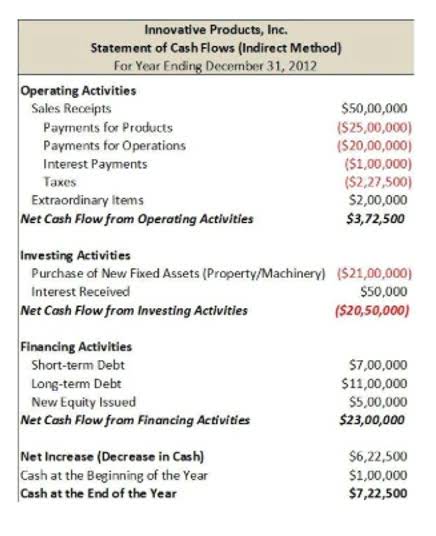You can use it to keep track of your spending and revenue by reporting expenses and income. You can also use the general ledger to compile a trial balance and spot unusual transactions, and help in creating financial statements. As a ledger account example of writing, the debit column is for credit transactions. General ledgers come in handy for businesses that employ the double-entry method, and it means every financial the difference between assets and liabilities transaction affects at minimum two general ledger accounts. Having proper ledger accounts help you to prepare a trial balance sheet, meaning you can verify the accuracy of your accounts and prepare final accounts.
Individual ledger accounts are then presented in the general ledger which is also called the book of accounts for business. Ledgers split the financial data in the journals into distinct accounts like accounts receivable, cash and sales and placed them on separate sheets. After accepting and receiving all transactions, the ledger balance will get an update by the close of daily business. Banks determine this balance by recording every transaction, including the interest income, a deposit of funds and both-in-and-out wire transactions. It also includes the clearance check and clear debit and credit card transactions. You can prepare financial statements once you have verified the accuracy of your ledger accounts.
Details
Whether you’re shifting funds between networks to take advantage of DeFi opportunities, lower fees, or diversify your holdings, Ledger Live makes cross-chain swaps seamless and secure. And with security at its core, Ledger extends beyond hardware to offer a seamless and integrated ecosystem for managing digital assets. As the Web3 space continues to evolve, experience of engaging with digital assets must also subsequently evolve but without compromising on security.
How do I record transactions in a ledger account?
A general ledger or accounting ledger is a record or document that contains account summaries for accounts used by a company. In other words, a ledger is a record that details all business accounts and account activity during a period. You can think of an account as a notebook filled with business transactions from a specific account, so the cash notebook would have records of all the business transactions involving cash. A Ledger records transactions from the journal and forms separate accounts for them in chronological order.
Grab a Ledger device and experience the next evolution of secure digital asset management. With Ledger Live as your trusted interface and Ledger Stax and Ledger Flex enhancing usability, you get the best of both worlds—uncompromising security and seamless asset management. With partners like Mercuryo and BTC Direct, you can easily set up recurring purchases within the Ledger Live app.
Types of General Ledger Accounts
The Ledger Live app is a comprehensive interface for managing digital assets, enabling users to securely buy, sell, stake, and swap crypto. Features like Clear Signing, Ledger Recover, and Ledger Sync further enhance the user experience by addressing pain points like transaction verification and recovery of access in case of lost keys. From day one, Ledger has been built on the foundation of secure self-custody. You can automate both your general journal and general ledger with modern accounting software. This includes non-routine or complex transactions that don’t fit neatly into specialized journals, such as depreciation, accruals, and big purchases and sales.
- A purchases ledger helps you to keep a track of the purchases your business makes, so you can make sure that you have enough purchases for the smooth manufacturing of the products.
- A purchases ledger, or creditors ledger, records all transactions relating to purchases that a business entity makes.
- In this case, the balance is maintained because the debit and credit entries are equal once more and solely affect the asset side of the equation.
- A sales ledger is a record of transactions that are related to sales.
- Transactions that don’t fit into any specified categories are included in the general ledger.
- Let’s use an office supplies purchase as an example for comparing the ledger and the journal.
Information is stored in a ledger account with beginning and ending balances, which are adjusted during an accounting period with debits and credits. Individual transactions are identified within a ledger account with a transaction number or other notation, so that one can research the reason why a transaction was entered into a ledger account. Transactions may be caused by normal business activity, such as billing customers or recording supplier invoices, or they may involve adjusting entries, which call for the use of journal entries. I like my clients to keep a thumbnail “flash report” of key information in their business. But because data is located in different places, it’s time consuming to put together.
All your staking activities are conveniently managed through Ledger Live’s Earn section. This unified dashboard allows you to track your staked assets, monitor pending rewards, and review validator performance for multiple chains in one place. Whether you’re staking Ethereum, Solana, or other supported assets, you can see everything at a glance without needing to switch between different wallets or platforms. This centralized view makes it incredibly easy to stay on top of your staking portfolio, even if you’re new to the process. Managing assets across multiple blockchains is now a fundamental part of Web3.
- The term used to match your bank’s account entries is famous as “bank reconciliation.” Typically, reconciliations are completed at the end of each month.
- As the Web3 space continues to evolve, experience of engaging with digital assets must also subsequently evolve but without compromising on security.
- These displays significantly enhance transaction visibility, navigation, and user experience, making managing your crypto assets smoother than ever.
- In the case of electronic records, a major concern is whether files are being backed up to an off-site location, and if so, the frequency of these backups.
- The set of ledger accounts maintained by a business is an essential part of its accounting records, since it summarizes all business transactions recorded by the accounting staff.
- Once they transfer the funds, it becomes accessible to the account holder.
- Whenever a transaction takes place it is denoted and recorded in the journal in the form of the journal entry.
© Accounting Professor 2023. All rights reserved
This journal entry would then be transferred to the respective ledger accounts as follows. Here, the accounts payable account is credited because the company’s liabilities have increased. Well-organized ledgers save time reconciling accounts, enable deeper financial insights, and provide audit trails for tracking transactions. Whether you have studied accounting or not, you might have come across the terms ‘journal’ and ‘ledger’ quite often. Here, we will discuss what is ledger in accounting is, how it works, and the different types of ledgers.
The Accounting Equation: A Detailed Guide with In-Depth Examples and Solutions
Another common use of sub-ledger accounts is to divide large ledger accounts into several sub-accounts. This way, a business can easily manage large accounts by categorizing them into relevant sub-categories. All businesses require items as raw materials to process, manufacture and distribution, in lesser amounts like selling ledgers.
Let’s use an office supplies purchase as an example for comparing the ledger and the journal. The journal is where you make the changes, while the ledger shows the final, corrected results. It’s your go-to central information source for financial reporting and analysis. Explore this guide to general journals versus general ledgers to better understand what they do and their main differences. The term used to match your bank’s account entries is famous as “bank reconciliation.” Typically, reconciliations are completed at the end of each month.
After almost a decade of experience in public accounting, he created MyAccountingCourse.com to help people learn accounting & finance, pass the CPA exam, and start their career. Now let’s move on to talk about debits vs. credits and how they work in an accounting system. Purchase Ledger – Purchase Ledger is a ledger in which the company organizes the transaction of purchasing the services, products, or goods from other businesses. It gives the visibility of how much amount the company paid to other businesses. This specimen is standardized across all the different places in India.
Accounting 101 for Small Businesses
Similarly, income statement accounts can be categorized into two categories. Follow Khatabook for the latest updates, news blogs, and articles related to micro, small and medium businesses (MSMEs), business tips, income tax, GST, salary, and accounting. It includes all transactions that you make in cash during a specific time. Cash transactions must need verification against bank transactions to discover how to use money properly. For example, you’ll need to record rent expenses every month if you rent computers and decide to prepay the rent in January for the next twelve months.
The sales, buy, and general ledgers are the three primary types of ledgers, and each has a specific function in financial management. The ledger account book balance definition may take the form of an electronic record, if an accounting software package is used, or a page in a written ledger, if the accounting records are kept by hand. In the case of electronic records, a major concern is whether files are being backed up to an off-site location, and if so, the frequency of these backups. If a written ledger is used, then the concern is centered on how well it is being protected, such as via storage in a fireproof safe. Sales Ledger – Sales Ledger is a ledger in which the company maintains the transaction of selling the products, services or cost of goods sold to customers. Mr. Wick wants to journalize these transactions and create ledger accounts for April 2019.
A general ledger helps you to know the overall profitability and financial health of your business. In addition to this, the information contained in general ledgers help you to run any audits smoothly. Operating income includes sales revenue, income received as fees and commission, etc., and these incomes will depend on the type of business you undertake.
Therefore, you need to prepare various sub-ledgers providing the requisite details to prepare a general ledger. If you are a business owner, it is important to use ledger accounts to track your financial performance. By doing available to promise atp so, you can improve your business’s financial health and make better decisions for the future.



